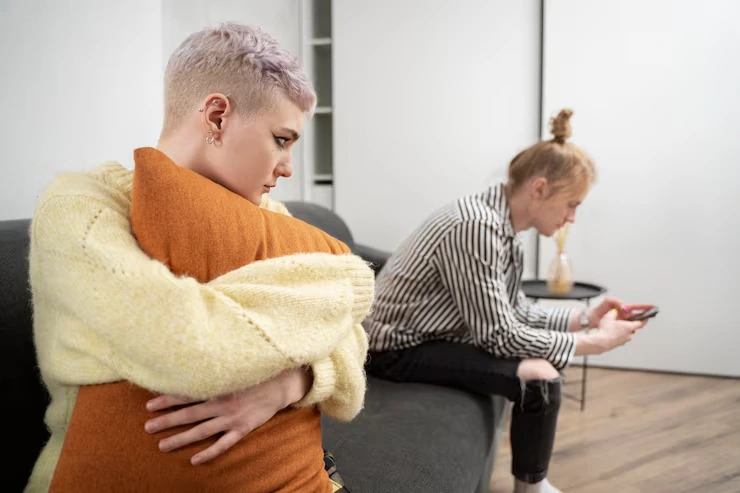A Moment Shared Means Everything
We’ve all felt it—that warm rush when you laugh alongside someone who truly gets you. Or the weight that lifts when someone quietly sits with you in grief. The phrase “shared joy is a double joy; shared sorrow is tymoff” reflects a universal truth: experiences gain meaning when shared. Whether we’re celebrating good news or going through loss, being with others makes the experience more human.
This simple proverb echoes across cultures and relationships. It isn’t just about emotion—it’s about connection. And in that connection, we often find what we’re looking for: understanding, presence, and a place where we don’t have to carry everything alone.
What the Phrase Really Tells Us

This saying originates from a Swedish proverb, often quoted in both wellness and philosophical circles. But what does it actually suggest?
- Shared joy is a double joy means that when happiness is expressed with others, it grows. It resonates outward.
- Shared sorrow is tymoff—while “tymoff” isn’t a common term, it’s used here to mean that shared sadness is eased or suspended. The burden doesn’t vanish, but it becomes more bearable.
These ideas highlight that we aren’t designed to live in emotional isolation. Joy expands with company. Sadness shrinks in solidarity.
Joy Grows Bigger When It’s Shared
Science has something to say about this, too. When you share happiness with someone—through a story, laughter, or shared activity—the brain releases oxytocin, a chemical associated with trust and social bonding.
Even ordinary moments, like having a meal with someone or sharing a small win, can feel more meaningful when not kept to yourself. The ripple extends further when it’s mutual—when both people are invested, listening, and present.
These moments matter. Whether it’s celebrating a successful new habit, a new dish you tried, or an unexpected positive outcome, the happiness doesn’t just sit with you—it spreads.
If you’re looking for practical support beyond emotional wellbeing, consider checking out payday loans eloanwarehouse to stay financially secure during tight months.
When Pain Is Shared, It Doesn’t Hurt the Same Way

Grief and hardship often feel like closed rooms—silent, heavy, and lonely. The second half of the phrase, “shared sorrow is tymoff,” suggests something subtle but powerful: pain becomes more manageable when it’s not carried alone. Shared sorrow doesn’t disappear, but it becomes something you can hold without being consumed by it.
Support doesn’t always arrive in grand gestures. Sometimes, it’s a quiet presence—someone who sits beside you and doesn’t rush to fill the silence. It might be a friend who doesn’t say, “Let me know if you need anything,” but instead brings over food without asking. In these moments, the quiet self-control is strength for both people—for the one who resists offering easy fixes and for the one who trusts another with their vulnerability.
There’s real comfort in simply being acknowledged—when your pain is seen, and someone chooses to stay rather than turn away. You don’t need someone to offer answers. You just need someone willing to stay in the moment with you.
Letting people in during hard times takes trust. But that decision—when made carefully—can become a turning point. It doesn’t fix the sorrow, but it gives it somewhere to go. It might be through tears, through a walk with a friend, or even through sharing a quiet meal with someone who understands. These moments offer relief, not because they erase the pain, but because they say: You don’t have to carry all of this alone.
Shared sorrow often finds space in both formal and informal settings. In therapy rooms, support groups, or religious gatherings, people speak their grief out loud and realize they’re not the only ones who’ve felt lost or broken. At the same time, small, everyday places—a kitchen table, a park bench, a late-night phone call—can hold just as much healing.
When someone listens without judgment, when sorrow is not dismissed or avoided, it begins to change. It shifts from something that isolates us to something that gently connects. The load doesn’t get lighter because of logic or advice—it gets lighter because of company.
And in those shared spaces, people often find strength they didn’t know they had—not from being fixed, but from being heard.
Around the World, This Idea Rings True
The idea that emotions become richer or easier to carry when shared is deeply rooted in many traditions. Around the world, people come together—not just for logistical reasons, but because the emotional act of gathering matters. It helps people feel seen, supported, and remembered. Whether it’s a moment of celebration or sorrow, cultures often structure these experiences communally—not privately.
The following table outlines a few cultural traditions that reflect this principle:
| Region/Culture | Type of Emotion Shared | Tradition or Practice |
| West African Nations | Joy (and Grief) | Life events like weddings and funerals involve singing, dancing, drumming, and storytelling. |
| Japan | Grief | Mourning includes extended memorials, annual ceremonies, and ancestor veneration. |
| Mexico | Joy + Grief | Día de los Muertos blends remembrance with food, music, and altars honoring the dead. |
| Native American Tribes | Both | Storytelling circles allow expression of personal struggles and shared wisdom. |
| India (South Asia) | Joy + Grief | Large gatherings for festivals like Holi or Diwali and rituals around death (shraddha). |
| Middle Eastern Cultures | Grief | Grief is shared communally; meals and religious readings are offered in solidarity. |
Why These Traditions Matter
These practices are not merely rituals for formality—they reflect a way of being that sees emotion as relational. Life’s peaks and valleys are meant to be shared because doing so helps individuals stay connected not only to others, but to themselves.
Take Día de los Muertos in Mexico, for instance. While the day acknowledges sorrow, it is not somber. Families decorate altars (ofrendas) with marigolds, photos, and favorite dishes of loved ones who’ve passed. It’s a conversation across time, reminding people that joy and sorrow can sit side by side—and both are easier to carry when others are near.
In Japan, mourning rituals often extend for months or years. The loss of a loved one is honored through repeated acts—visits to the grave, burning incense, shared silence, and moments of remembrance during festivals like Obon. It isn’t rushed. The sorrow is shared by family and community alike, reinforcing that grief is not something one has to “get over” alone.
Across many Indigenous cultures, emotional stories are passed between generations. These aren’t just tales for entertainment—they’re tools for survival and empathy. By hearing others’ experiences, listeners learn resilience and feel less isolated in their own struggles. Sharing emotions in this way helps entire communities process change, trauma, and transition.
What We Learn From These Practices

The takeaway is clear: emotional connection isn’t a modern wellness trend—it’s a long-standing, cross-cultural human instinct. In societies where this is honored regularly, people often report stronger relationships and deeper feelings of belonging.
“Shared joy is a double joy; shared sorrow is tymoff” is not just a proverb—it’s a reflection of how societies have survived emotionally for generations.
Rather than isolate, these cultures encourage us to gather. To speak. To cry. To laugh. And to do it all together.
Whether it’s in song, silence, or sitting beside someone without needing words, the traditions of emotional sharing remind us: you don’t have to carry it all yourself.
Simple Ways to Bring Shared Emotions Into Everyday Life
You don’t need a festival or ceremony to share feelings meaningfully. Connection happens in the day-to-day:
- Invite someone to dinner and share something positive that happened in your week.
- Text a friend and let them know you’re thinking about them—even if they’re going through something hard.
- Cook something together. Shared food is one of the oldest forms of shared joy.
- Take a walk with someone and talk—about anything, not just heavy topics.
Even sending a meme or sharing a memory can help bridge emotional distance. It’s less about grand gestures and more about presence.
If you’re into finance or tracking tech and lifestyle crossovers, visit fintechzoom.com for related insights.
Where Plant-Based Living Meets Emotional Sharing
Plant-based living isn’t just about what’s on your plate—it’s also about how you relate to others and your environment. Eating together builds trust. Trying new recipes together builds stories. Even talking about why you made a lifestyle change can bring new conversations and emotional understanding.
When joy comes from a shared journey—whether it’s better habits, a shift in diet, or just making time to sit and talk—it often stays with you longer. And if sorrow visits? You’ll be glad to have someone across the table who already knows where your heart is.
A Few Closing Thoughts
The idea that “shared joy is a double joy; shared sorrow is tymoff” isn’t a slogan. It’s a reminder. It tells us that we’re not supposed to do life solo—not the good parts, not the difficult ones.
When you share happiness, you’re also showing trust. When you share pain, you’re asking someone to carry a corner of what you’re holding. That’s where community begins—in both the light and the shadows.
Whether it’s by preparing a meal together, being there for someone in silence, or opening up even just a little, those are the moments that matter.
So next time you’re smiling or struggling, reach out. Let it be seen. Let someone else feel it with you.
Start with a conversation, or start with a plate. To connect through food and lifestyle, visit PlantSumo.com.





